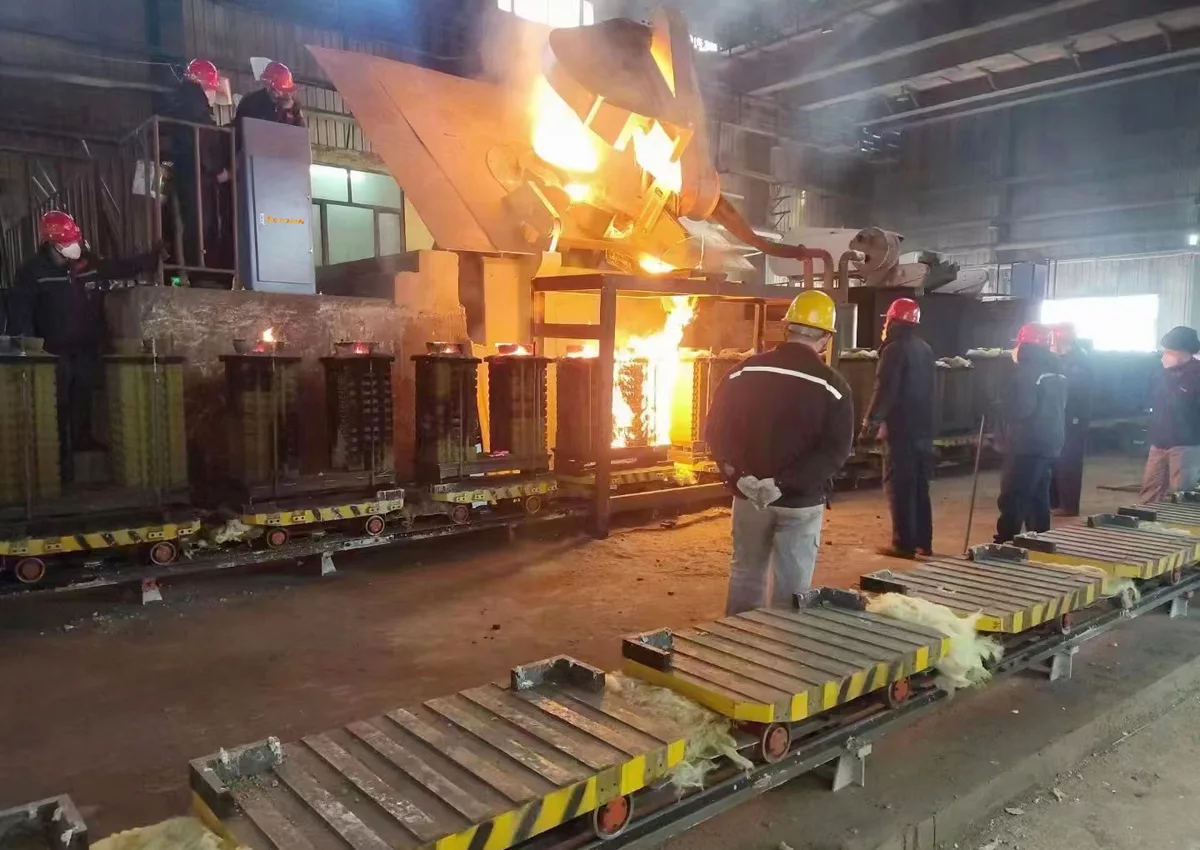
Metal melting methods are different ways of heating the metal to its melting point and transforming it into liquid form.
Some common metal melting methods are:
- Induction melting: This method uses an induction melting furnace that creates a magnetic field that induces eddy currents in the metal and heats it up.
- Cupola melting: This method uses a vertical shaft furnace that burns coke and limestone to produce hot air that melts iron or steel.
- Arc melting: This method uses an electric arc furnace that generates an arc between electrodes and the metal charge, creating intense heat that melts the metal.
- Crucible melting: This method uses a crucible, a container that can withstand high temperatures, that holds the metal and is heated by a flame, resistance heating, or induction heating.
- Reaction melting: This method uses a chemical reaction, such as a combustion or thermite reaction, that produces enough heat to melt reactive metals like titanium or zirconium.
- Vacuum melting: This method uses a vacuum chamber that reduces the pressure and prevents oxidation or contamination of the metal while it is heated by induction or resistance heating.

The difference between metal induction melting and other melting methods
Metal induction melting is a process in which an induction melting furnace is used to heat a metal to its melting point. Metal to be melted is usually placed in a crucible and heated with induction to its melting point. Induction melting has advantages such as a clean, energy-efficient, and well-controlled melting process, compared to most other means of metal melting.
Some of these methods are more suitable for certain types of alloys, costs, or environmental regulations than others. For example, cupola melting is widely used for cast iron production, arc melting is used for steelmaking and alloying, crucible melting is used for small-scale or precious metal melting, reaction melting is used for reactive metals like titanium and zirconium, and vacuum melting is used for high-purity or specialty alloys
The main difference between metal induction melting and other melting methods is the heat source. In induction melting, the heat is generated by an alternating current flowing through a coil of copper wire that creates a magnetic field that induces eddy currents in the metal. In other melting methods, the heat is applied by combustion, electric arc, resistance heating, or chemical reaction. Induction melting does not require an arc or combustion, which can reduce the contamination and loss of alloying elements in the metal. Induction melting also has a faster melting rate and better temperature control than other methods.
